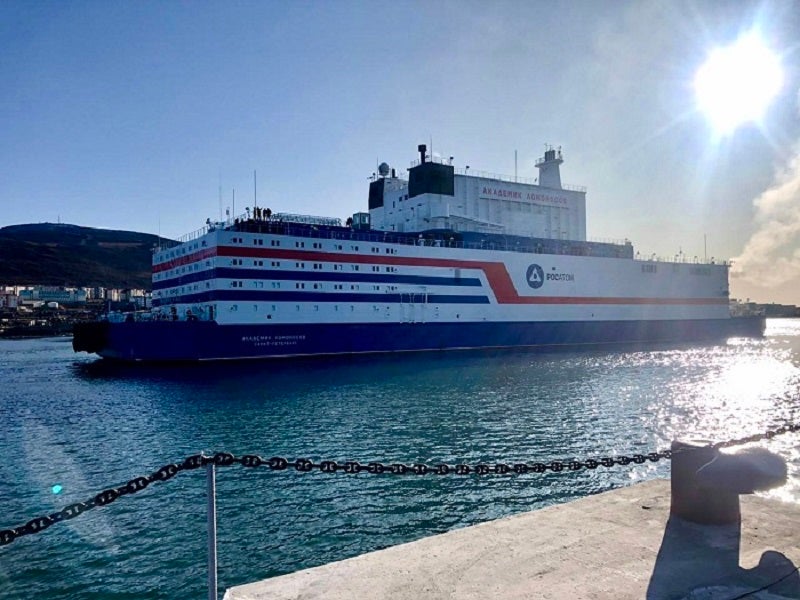
Russian nuclear company Rosatom has announced the arrival of the world’s first floating nuclear power plant, Akademik Lomonosov, at the port of its permanent location in Russia’s Far East.
The 144m-long and 30m-wide vessel has a displacement of 21,000t and has docked ahead of commission at the port in Pevek, Chukotka. It is expected to be commissioned next year.
Once commissioned, Akademik Lomonosov is claimed to become the first floating nuclear unit equipped with small modular reactors (SMRs) technology.
Rosatom director general Alexey Likhachev said: “It may be one small step for sustainable development in the Arctic, but it’s a giant leap for the decarbonisation of remote off-grid areas and a watershed in the development of small modular nuclear power plants in the world.”
The company said that scientists, nuclear energy experts and environmentalists across the world have supported the project.
The new floating nuclear power plant is equipped with two KLT-40C reactor systems with 35MW capacity each. It was designed by Rosatom and will be part of its Floating Nuclear Thermal Power Plant (FNPP).
Akademik Lomonosov has been designed to reach out to the hard-to-reach areas, as well as smaller grids and for off-grid installations.
It serves as a pilot project and a ‘working prototype’ for a future fleet of floating nuclear power plants and onshore installations that are based on small modular reactors (SMR) made in Russia.
The company further added that SMRs have been designed to operate non-stop without the need for refuel for three to five years.
A Rosatom spokesman said: “Once we begin to manufacture small reactors in series, SMR-based plants for remote areas have a good chance to produce electricity cheaper than diesel, saving money and preventing harmful emissions.”
Last month, Rosatom announced that it is prepared to launch the world’s first floating nuclear plant in the Arctic Ocean, which it describes as being ‘based on the application of advanced nuclear technology.’



